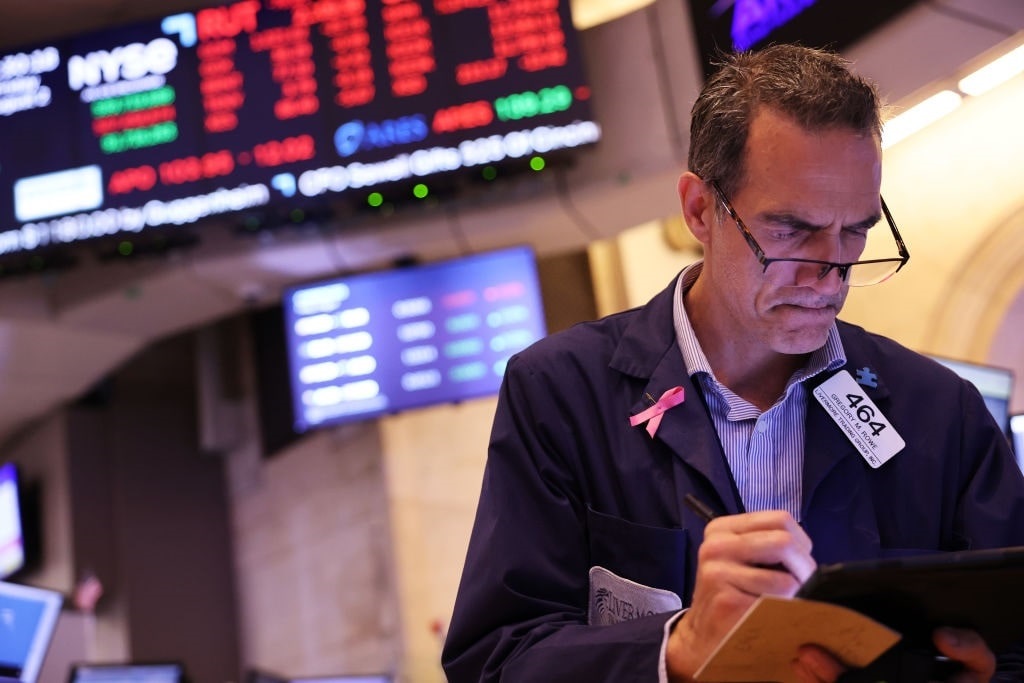Is August 2024 the new Black Friday of 1987? Global stock markets are burning this year’s gains for various reasons. Indeed, attempting to determine the one catalyst for the latest crash in international markets might be a superfluous and headache-inducing endeavor. The meltdown in equities, bonds, metals, and energy is a cavalcade of foreign currency challenges, a weak July jobs report, and actions by the Oracle of Omaha.
A Rundown of Stock Markets
Canadian investors were able to avoid the worldwide stock market selloff, but US, European, and Asian traders were less fortunate.
Japan’s Nikkei cratered 12.4%, South Korea’s Kospi plunged 8.77%, Thailand’s SET Index fell nearly 3%, and Hong Kong’s Hang Seng Index declined 1.4%. In Europe, the UK FTSE 100 Index erased 2%, Germany’s DAX tumbled 1.82%, and France’s CAC 40 Index dropped 1.42%.
But in the world’s largest economy, it was a bloodbath as everything on Wall Street drowned in an ocean of red ink. The Dow Jones Industrial Average crashed as much as 1,100 points. This was followed by the S&P 500’s 3% decrease and the tech-heavy Nasdaq Composite Index’s roughly 3% selloff. To put a dollar amount on these losses, a couple of trillion in market value were eliminated in a single session. This figure is larger if one goes back to Aug. 1.
Of course, even safe-haven investors were not spared from the bears’ buffet-sized feast. Short-, medium-, and long-term US Treasury yields tanked before recovering near the closing bell. Metals puked, with gold and silver slumping 1% and 4%, respectively. Energy commodities held their own, though US crude oil fell to around $73 per barrel and natural gas dipped below $2 per million British thermal units (Btu). Cryptocurrencies could not flee from the bear claws as Bitcoin and Ethereum fell 8% and 11%, respectively.
So, why is this happening? While stock market observers have their theories, the short-term factors are based on three developments in the equities arena.
Understanding the Selloff
First, the unemployment rate ticked up to 4.3% in the Bureau of Labor Statistics’ July jobs report. Despite the jobless rate slightly up from an all-time low, traders panicked when it turned out that the employment numbers triggered the Sahm Rule. As Liberty Nation News recently explained, this functions as a recession indicator because it initiates when the three-month average unemployment rate climbs more than 0.5% in a year. To be fair, the inventor, former Federal Reserve and White House economist Claudia Sahm, does not think the US economy is transitioning to a recession.
Market watchers are mixed on this view. The main data point that launched the current decline on Aug. 1 showed the manufacturing sector deteriorating. The Institute for Supply Management’s (ISM) Manufacturing Purchasing Managers’ Index (PMI) – a measure of the industry’s trend – fell deeper into contraction territory last month. Plus, the S&P Global Manufacturing PMI slipped into the recession zone in July. However, the ISM non-manufacturing PMI shifted back into a positive area but revealed inflationary pressures.
Second, everyone is talking about a substantial unwinding of the “carry trade” in the stock markets. Kit Juckes, chief foreign exchange strategist at Societe Generale, warned in a research note that “you can’t unwind the biggest carry trade the world has ever seen without breaking a few heads.” This complex trading tactic refers to borrowing in a currency with low interest rates and reinvesting the proceeds in high-yielding assets. The financial markets are monitoring this event with the Japanese yen, which had plunged to its lowest level in four decades against the US dollar this past spring before recovering on government intervention and traders possibly unloading profitable carry trades to pare their losses elsewhere. The yen gained 1.5% against the buck on Aug. 5, adding to its 10.25% increase over the last month.
Finally, there is billionaire Warren Buffett, the head of Berkshire Hathaway. He added to the jitters in stock markets everywhere when he slashed his Apple stake by half. The 93-year-old legendary investor’s company revealed in a filing that the firm dumped 49% of its shares in Apple. He also began selling shares of his second-largest holding, Bank of America. Berkshire now possesses a huge $277 billion war chest in addition to the money held in short-term debt securities that contribute $95 million a month to the organization’s cash pile. Whether for tax purposes or something more ominous, global investors were unhappy.
Federal Reserve, Please Help!
Now that recession concerns are back on the table, there are calls for the Federal Reserve to slash interest rates swiftly and aggressively. The futures market is pricing in a half-point rate cut at the September Federal Open Market Committee (FOMC) policy meeting, up from 25 basis points a few days ago, according to the CME FedWatch Tool. Traders are also penciling in more reductions to the benchmark federal funds rate at the November and December meetings, between a quarter- and half-point. But Jeremy Siegel, the professor emeritus of finance at the University of Pennsylvania’s Wharton School, wants the Eccles Building to go one step further: execute an emergency 75-basis-point rate cut now.
Will the US central bank take its cues from panicking investors? Not according to Chicago Fed President Austan Goolsbee, who told CNBC that the entity is still data-dependent. “I’m not going to bind our hands on what should happen going forward because we’re still going to get more information. But if we are not overheating, we should not be tightening or restrictive in real terms,” he said.
Who knew that almost guaranteeing a rate cut next month would not be enough to satisfy institutional and retail traders? Chair Jerome Powell has some printin’ to do!




